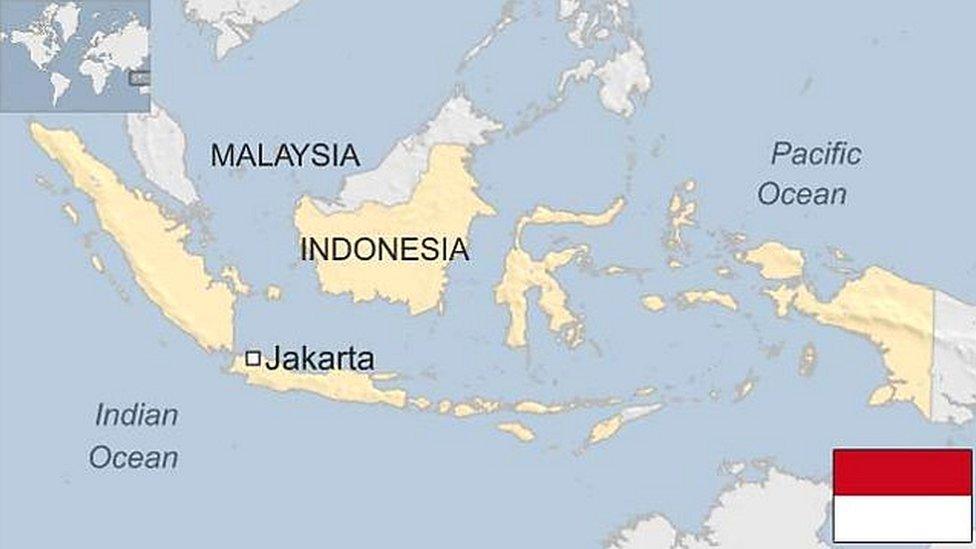Bali volcano: 'Thousands evacuated' from Mount Agung area
- Published

Thousands of Bali residents have been evacuated to town halls and schools
The Red Cross says more than 42,000 people have been evacuated from their homes near an active volcano in Bali, as authorities warn it could erupt.
The area around Mount Agung has seen hundreds of tremors and signs of magma rising to the surface in recent days.
Authorities have imposed a 12km (7.5-mile) exclusion zone around the mountain and issued their highest level alert on Friday.
The island's main tourist areas and flights remain unaffected for now.
Is Bali volcano about to erupt?
Indonesia's national volcanology centre said in a statement (in Indonesian), external on Sunday night that the mountain's "seismic energy is increasing and has the potential to erupt".
A 200m-tall column of smoke was seen rising from the mountain early on Sunday, said the chief geologist monitoring the site, Gede Suantika.
He told the Reuters news agency: "We observed sulphuric smoke spewing from its crater and we never saw this before."
Allow X content?
This article contains content provided by X. We ask for your permission before anything is loaded, as they may be using cookies and other technologies. You may want to read X’s cookie policy, external and privacy policy, external before accepting. To view this content choose ‘accept and continue’.
Officials said they started detecting shallow tremors in late August, and first raised the alert from "normal" to the second-tier "vigilant" level on 14 September. Indonesia has a four-level volcano alert system.
Within days the volcano showed increasing signs of activity, and authorities stepped up their alerts and evacuations of the rural villages surrounding the mountain. The area is now under the highest caution level.
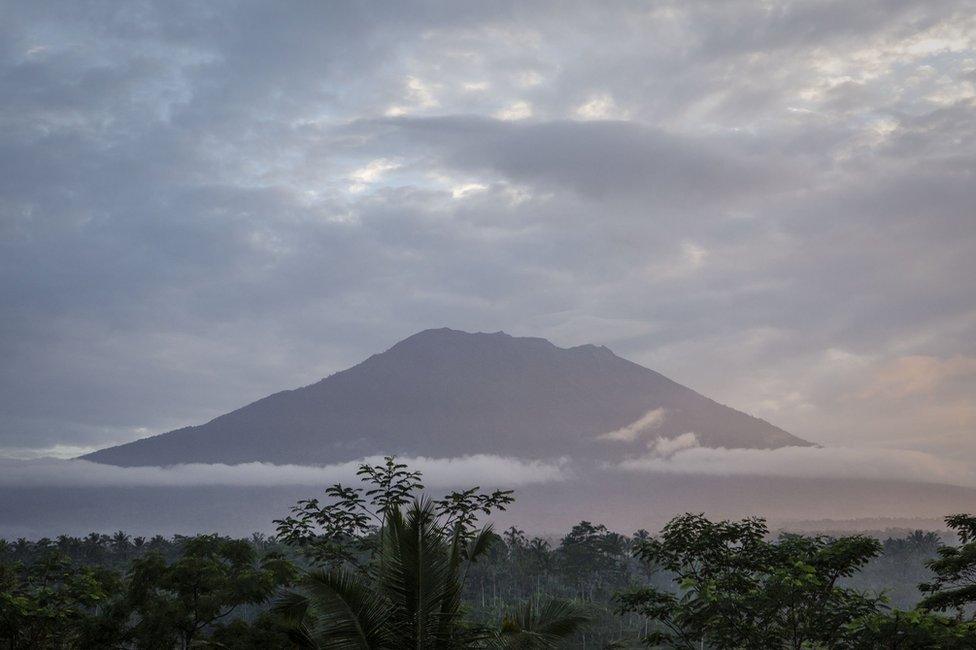
The mountain has shown signs of increased volcanic activity in recent weeks
Thousands of Balinese are now living in shelters in town halls and schools, with authorities trucking in tonnes of aid supplies. Some communities have also set up livestock shelters for the cows which they had to leave behind, reported The Jakarta Post., external
Many villagers are still visiting their homes in the daytime and life is continuing normally, according to Reuters.
Allow X content?
This article contains content provided by X. We ask for your permission before anything is loaded, as they may be using cookies and other technologies. You may want to read X’s cookie policy, external and privacy policy, external before accepting. To view this content choose ‘accept and continue’.
Mount Agung, which is more than 3,000m above sea level, lies in the eastern part of Bali, which is a popular tourist destination.
The volcano is about 70km from the main tourist areas of Kuta and Seminyak, which remain unaffected for now.
Flights in and out of Bali are operating normally. The local tourism board, external said on Sunday that boats connecting to neighbouring islands Lombok and Java, also popular with holidaymakers, were on schedule.
The board added, external that though there was no volcanic ash detected, visitors were still advised to "start preparing sufficient stock of face masks" in case of an eruption.

Several countries including Britain, external, Australia, external and Singapore, external have issued travel advisories for their citizens, warning of possible flight disruptions and evacuations.
More than 1,000 people died when Mount Agung last erupted in 1963.
Bali is much more densely populated than it was in 1963. But it also has better infrastructure, and technical developments have made it possible to detect dangers earlier and implement better emergency plans.
Mount Agung is among about 130 active volcanoes in Indonesia - an archipelago prone to volcanic eruptions and earthquakes as it sits on the Pacific "Ring of Fire".
- Published28 September 2016
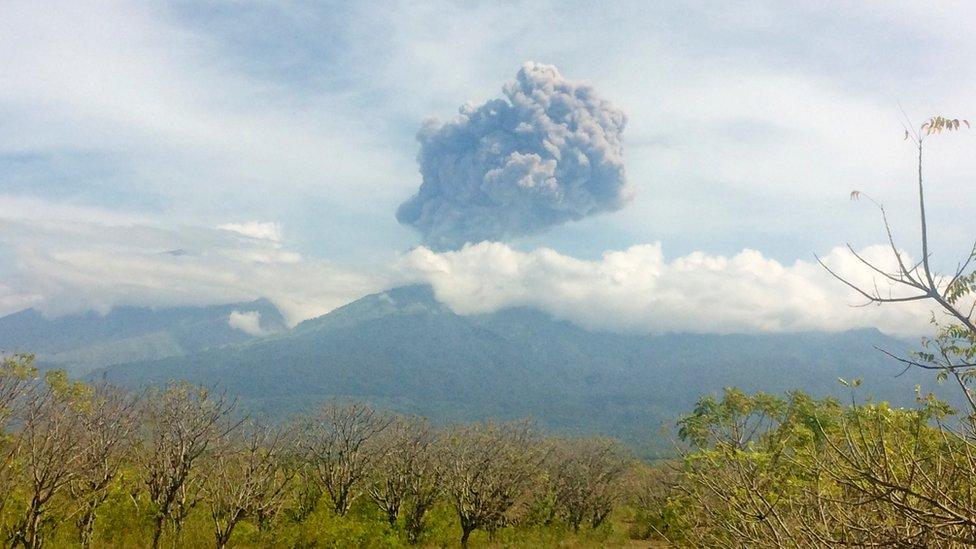
- Published22 May 2016
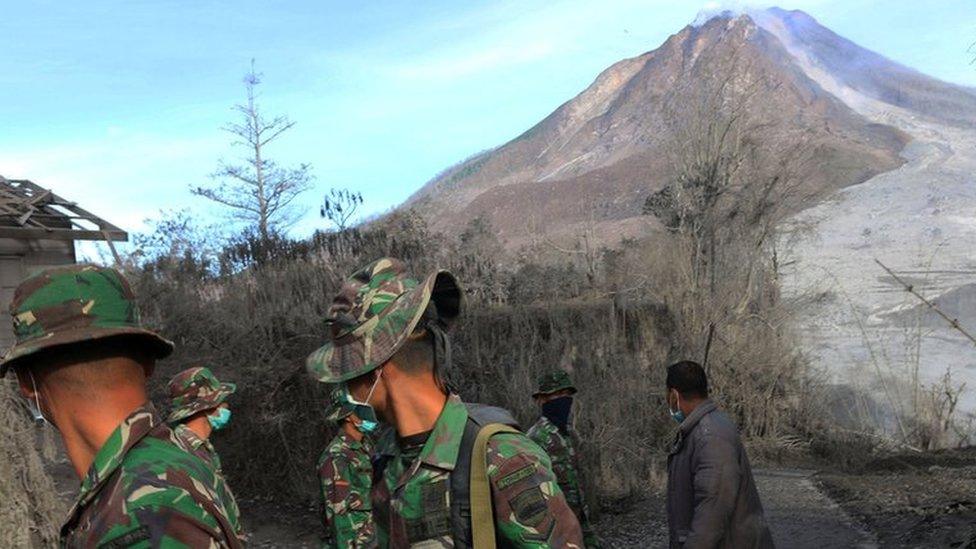
- Published5 November 2015

- Published23 May 2016
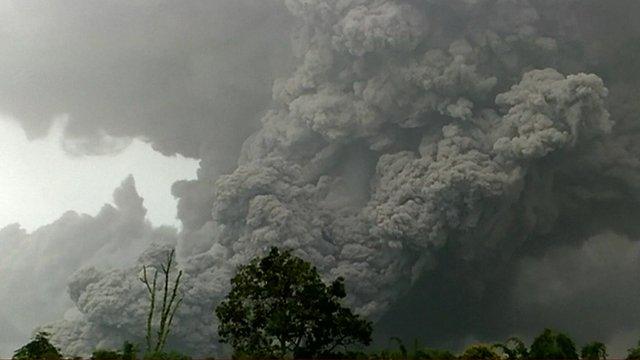
- Published25 October 2024
